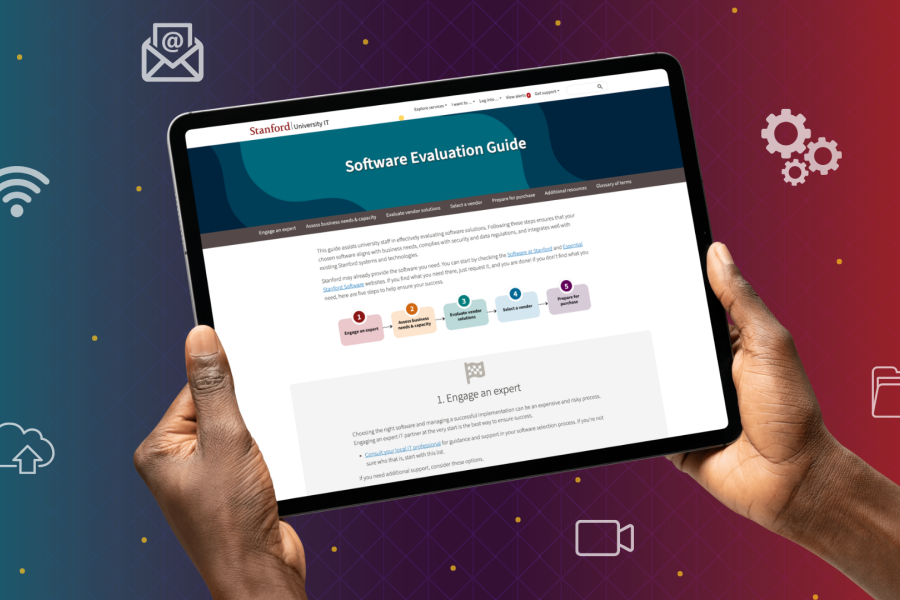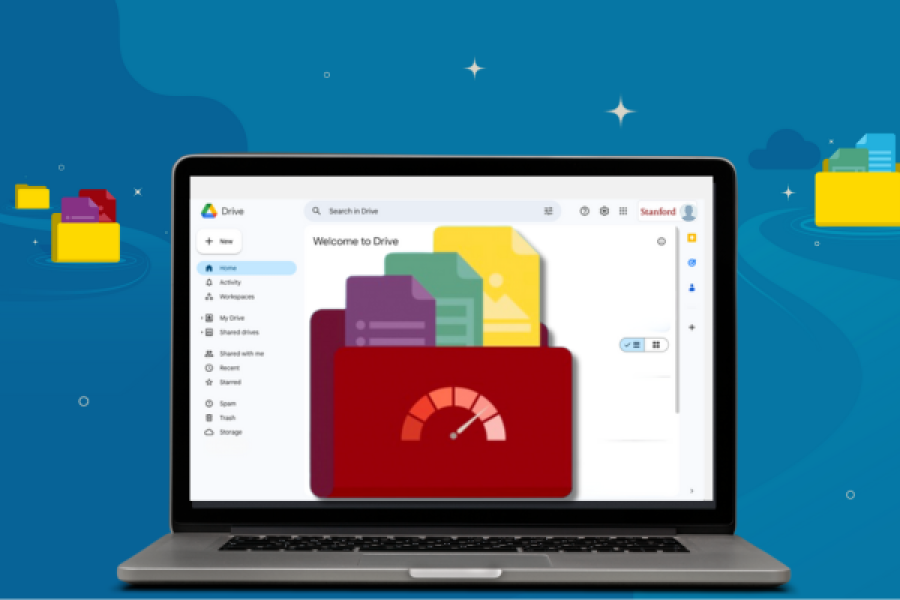The Stanford Research Computing Facility (SRCF) was recently awarded the U.S. Environmental Protection Agency’s ENERGY STAR certification for superior energy performance, for the second year in a row. Learn more about this award and the SRCF in this 2018 article, Stanford's Data Center Earns National Recognition for Saving Energy.
University IT partners with Sustainable Stanford, Stanford Research Computing, and local IT departments to drive energy-efficient computing projects
When it comes to sustainability at Stanford, University IT (UIT) is a key player in efforts to increase the efficiency of campus IT infrastructure, reduce greenhouse gas emissions, and drive down energy consumption and costs. Recently, we partnered on two noteworthy sustainability projects.
Dismantling the Y2E2 data center
The School of Engineering (SoE) recently dismantled its Y2E2 Data Center, resulting in big wins for the department, research at Stanford, and sustainability. This involved a close collaboration between both staff and faculty at SoE, Stanford Research Computing (a joint effort of the Dean of Research and UIT), and the Sustainable IT program.
In response to the rapid failure of cooling fans, Alex Keller, senior systems security engineer for the SoE, partnered with climate and air pollution scientist, Professor Mark Jacobson, to upgrade and relocate Jacobson’s computational modeling servers out of the Y2E2 data center into the Stanford Research Computing Facility (SRCF).
More than 250 computing nodes were consolidated down to six high-performance nodes, significantly increasing operating reliability and saving nearly 150,000 kWh of energy per year.
As a result, SoE received a $64,000 rebate from Stanford’s Energy Retrofit Program (part of Sustainable IT) and was able to close down the data center completely, freeing up 413 square feet of on-campus space for academic use.
“The Energy Retrofit Program is here to remove cost as a barrier to sustainability,” said Rashmi Sahai, who manages the Sustainable IT Program.
Migrating Professor Jacobson’s upgraded servers out of Y2E2 and into the SRCF data center offers improved cooling efficiency with redundant infrastructure that reduces the risk of disruption to continuous computational research.
“Our support of Stanford’s academic mission is increasingly focused on reducing technology friction for the research and teaching community,” Keller said. “This project was a win on all fronts as we implemented a potent new computational capability while simultaneously reducing power inputs required, shrinking the physical footprint of the cluster, and improving operational security and reliability.”
Additional benefit was realized by the SoE and Professor Jacobson, as the Stanford Research Computing team now provides expert systems support of the SRCF cluster and ensures that data is safe and compliant with MinSec standards.
“This project further strengthened the longstanding collaborative relationship between the SoE and Research Computing,” Keller said. “In the end, we were able to do more with less by partnering with our campus colleagues to develop a bespoke solution for one of our top scientists.”
Improvements to sustainability dashboard, My Cardinal Green
After a successful launch of the My Cardinal Green Dashboard in May 2017, the UIT Student and HR Systems team, led by Leo Volkov, has augmented the system to accommodate new functionality. The online dashboard tracks sustainability activity for more than 3,800 program participants across the university. Over 14,000 conservation actions have occurred resulting in more than $114,000 of savings.
Over the course of two years, the team moved into a continuous improvement and maintenance phase and has implemented a variety of enhancements and upgrades to support greater administrative functionality as users and engagement grow. The UIT team planned, designed, and developed the dashboard which was built using LifeRay, a Java-based development platform.
Since the release of the portal in 2017, close to 20 enhancements have been made to improve the end user experience and streamline back end administration. Some of the enhancements have improved the aggregation of specific actions onto a leaderboard which displays the most engaged departments and individuals. Report creation has allowed program administrators to engage users who completed the survey but have not taken any actions.
Go Cardinal Green Today
My Cardinal Green is open to enrolled students and benefits-eligible employees at Stanford and SLAC. To participate, log in with your SUNet ID and begin by taking a brief, confidential survey. From there, you can perform suggested actions, track progress, and receive rewards.
Learn more about My Cardinal Green by reading this article.
Upcoming improvements, some of which roll out this month, include:
-
Archiving existing survey data and reset for all users
-
Updating code to automatically check for gaps when users have completed survey but are unable to access platform
-
Refreshing the dashboard to organize actions by topic, and level of difficulty so that users can more easily navigate and understand the scope of opportunity by reviewing the whole list, removing “Try Another Function”, and updating Aggregate Display information to include department participation and individual contribution compared to the whole
-
Reassigning Actions to Users Function by revising the functionality to allow for admin to select action that all users who completed would receive again, as opposed to on an individual basis, and ensuring that completion record remains unaffected
-
Managing the actions function by developing QC code for action import/add new action function to prevent errors in platform function and troubleshooting/resolving issues that staff/student mapping and verification radio button selections does not persist until the second save



